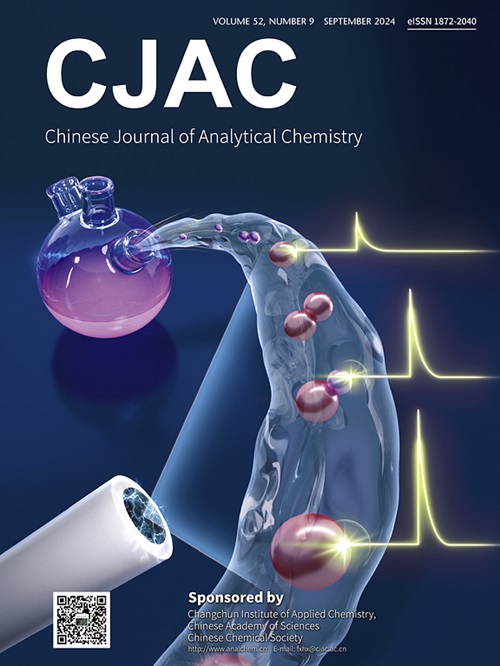通过网络药理学、分子对接、实验验证,探索惠阳止痛膏治疗膝关节骨性关节炎的潜在药理机制
IF 1.3
4区 化学
Q4 CHEMISTRY, ANALYTICAL
引用次数: 0
摘要
膝关节骨性关节炎(KOA)是一种常见的关节退行性疾病,惠阳止痛膏(HYZTP)制剂在临床治疗KOA中具有明显的治疗优势。然而,HYZTP的潜在药理机制尚不清楚。本研究旨在探讨合心汤治疗KOA的作用机制。方法:从TCMSP数据库中鉴定HYZTP的有效成分和靶点,从GeneCards数据库、Therapeutic Target database (TDD)数据库和Online Mendelian Inheritance in Man (OMIM)数据库中检索koa相关基因。使用在线Venny工具确定了与HYZTP和KOA相关的潜在目标。使用在线STRING数据分析工具进行蛋白质-蛋白质相互作用(PPI)网络分析,并使用Cytoscape对网络进行优化。基因本体(GO)和京都基因与基因组百科全书(KEGG)富集分析也使用Oebiotech云平台进行。通过分子对接研究HYZTP核心靶点与活性成分之间的相互作用,并通过动物实验探讨HYZTP治疗KOA的作用机制。结果:通过对数据库检索结果的整合,共鉴定出138种有效成分,这些活性成分与其治疗KOA的疗效有关。在129个靶点中,发现39个关键基因在TNF、IL-17、HIF-1和toll样受体(TLR)信号通路中显著富集。分子对接结果显示,HYZTP的关键成分-谷甾醇和名甾醇对TNF-α、IL-1β、AKT1等TNF信号通路靶点具有良好的结合潜力。进一步的组织病理学分析表明,HYZTP对兔KOA模型的软骨损伤有修复作用。western blotting结果显示,与模型组比较,HYZTP组大鼠膝关节软骨组织中TNF-α、RIP1、CASP3、BAX蛋白表达水平下调。结论:HYZTP可能通过抑制TNF信号通路,抑制细胞凋亡,从而抑制KOA的进展。本研究揭示了白芍治疗KOA的潜在药理机制,为进一步研究白芍的临床应用奠定了基础。本文章由计算机程序翻译,如有差异,请以英文原文为准。

Exploring the potential pharmacological mechanism of Huiyang Zhitong plaster in treating knee osteoarthritis through network pharmacology, molecular docking, and experimental validation
Knee osteoarthritis (KOA) is a common degenerative disease of the joints, and the Huiyang Zhitong Plaster (HYZTP) formulation exhibits distinct therapeutic advantages in the clinical treatment of KOA. However, the underlying pharmacological mechanisms of HYZTP remain unclear. This study aimed to explore the mechanism underlying the therapeutic effect of HYZTP in the treatment of KOA. Methods: The active components and targets of HYZTP were identified from the TCMSP database, and the KOA-related genes were retrieved from the GeneCards database, Therapeutic Target Database (TDD) database, and Online Mendelian Inheritance in Man (OMIM) database. The potential targets related to both HYZTP and KOA were identified using the online Venny tool. Protein-protein interaction (PPI) network analysis was performed using the online STRING data analysis tool, and the network was optimized using Cytoscape. Gene ontology (GO) and Kyoto Encyclopedia of Genes and Genomes (KEGG) enrichment analyses were additionally performed using the Oebiotech cloud platform. The interactions between the core targets and active components of HYZTP were investigated by molecular docking, and animal experiments were conducted for investigating the mechanism of action of HYZTP in the treatment of KOA. Results: A total of 138 active components of HYZTP, which are associated with its therapeutic effect in the treatment of KOA, were identified by integrating the results of database search. Of the 129 targets, 39 key genes were found to be significantly enriched in the TNF, IL-17, HIF-1, and Toll-like receptor (TLR) signaling pathways. The results of molecular docking revealed that the key components of HYZTP, namely, beta-sitosterol and stigmasterol, exhibited a favorable binding potential for the targets in the TNF signaling pathway, including TNF-α, IL-1β, and AKT1. Further histopathological analysis revealed that HYZTP repaired cartilage damage in a rabbit model of KOA. The results of western blotting revealed that the expression levels of TNF-α, RIP1, CASP3, and BAX proteins were downregulated in the knee joint cartilage of the HYZTP group, compared to those of the model group. Conclusion: HYZTP likely hinders the progression of KOA by inhibiting the TNF signaling pathway and suppressing cellular apoptosis. The study provides novel insights into the underlying pharmacological mechanism of HYZTP in the treatment of KOA, providing a foundation for further research into the clinical applications of HYZTP.
求助全文
通过发布文献求助,成功后即可免费获取论文全文。
去求助
来源期刊
CiteScore
3.60
自引率
25.00%
发文量
17223
审稿时长
35 days
期刊介绍:
Chinese Journal of Analytical Chemistry(CJAC) is an academic journal of analytical chemistry established in 1972 and sponsored by the Chinese Chemical Society and Changchun Institute of Applied Chemistry, Chinese Academy of Sciences. Its objectives are to report the original scientific research achievements and review the recent development of analytical chemistry in all areas. The journal sets up 5 columns including Research Papers, Research Notes, Experimental Technique and Instrument, Review and Progress and Summary Accounts. The journal published monthly in Chinese language. A detailed abstract, keywords and the titles of figures and tables are provided in English, except column of Summary Accounts. Prof. Wang Erkang, an outstanding analytical chemist, academician of Chinese Academy of Sciences & Third World Academy of Sciences, holds the post of the Editor-in-chief.

 求助内容:
求助内容: 应助结果提醒方式:
应助结果提醒方式:


